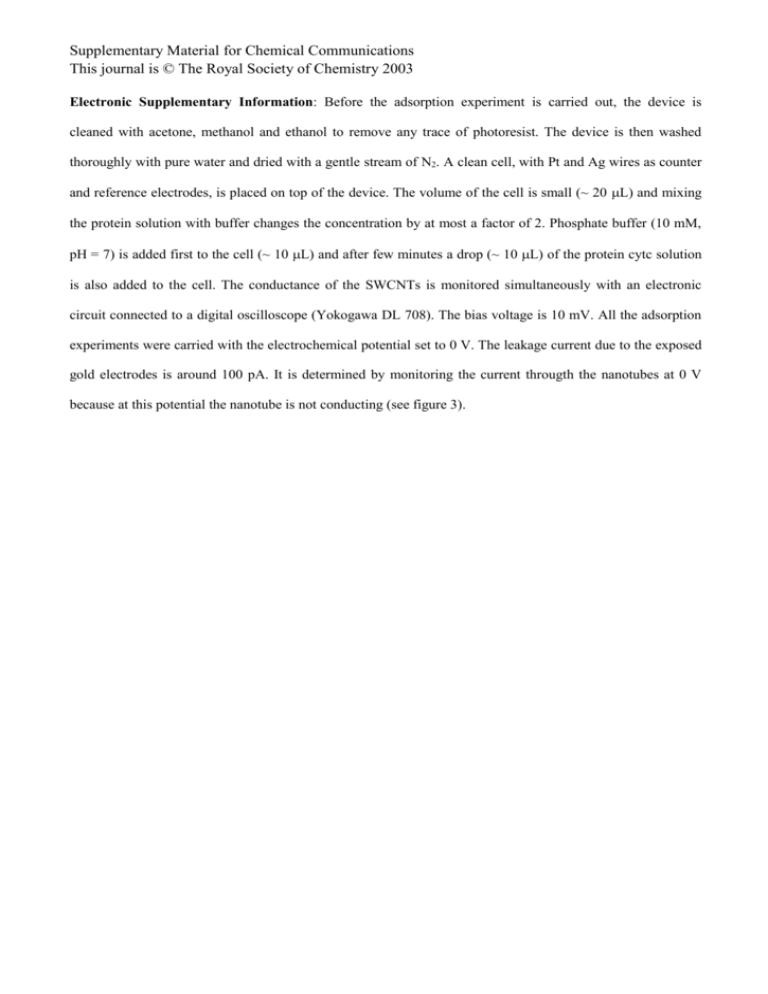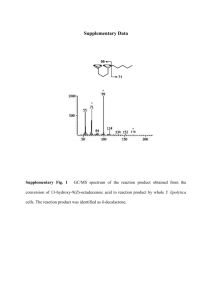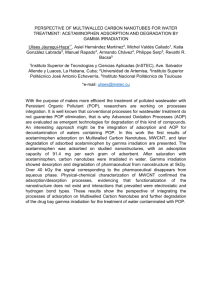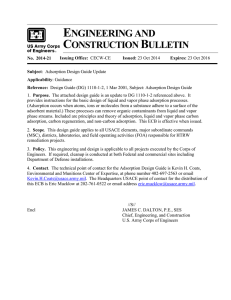Electronic Supplementary Information: Before the adsorption
advertisement

Supplementary Material for Chemical Communications This journal is © The Royal Society of Chemistry 2003 Electronic Supplementary Information: Before the adsorption experiment is carried out, the device is cleaned with acetone, methanol and ethanol to remove any trace of photoresist. The device is then washed thoroughly with pure water and dried with a gentle stream of N2. A clean cell, with Pt and Ag wires as counter and reference electrodes, is placed on top of the device. The volume of the cell is small (~ 20 L) and mixing the protein solution with buffer changes the concentration by at most a factor of 2. Phosphate buffer (10 mM, pH = 7) is added first to the cell (~ 10 L) and after few minutes a drop (~ 10 L) of the protein cytc solution is also added to the cell. The conductance of the SWCNTs is monitored simultaneously with an electronic circuit connected to a digital oscilloscope (Yokogawa DL 708). The bias voltage is 10 mV. All the adsorption experiments were carried with the electrochemical potential set to 0 V. The leakage current due to the exposed gold electrodes is around 100 pA. It is determined by monitoring the current througth the nanotubes at 0 V because at this potential the nanotube is not conducting (see figure 3).











